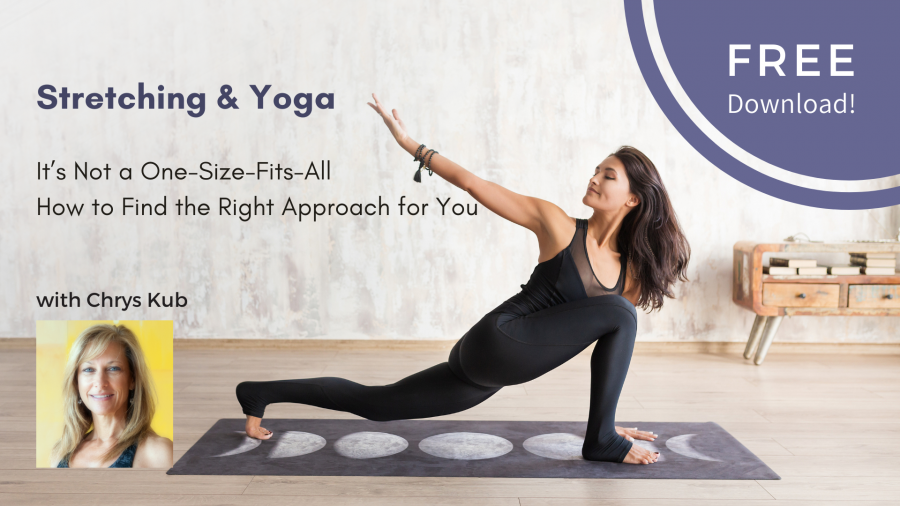Free Download! Stretching & Yoga: It’s Not a One-Size-Fits-All - How to Find the Right Approach for You
Course Info
- Price:
- $0.00
Chrys Kub
 Chrys Kub, PT, E-RYT 500 received her Masters in Physical Therapy and Biokinesiology from the University of Southern California. She is an integrative physical therapist with over 25 years of clinical experience. She has developed and taught courses in therapeutic yoga throughout the US and is a...
Chrys Kub, PT, E-RYT 500 received her Masters in Physical Therapy and Biokinesiology from the University of Southern California. She is an integrative physical therapist with over 25 years of clinical experience. She has developed and taught courses in therapeutic yoga throughout the US and is a... 
What is the most common reason people stop doing yoga - or never try it in the first place?
Many new yoga students stop yoga because they believe they’re just not flexible enough to practice, says physical therapist and yoga therapist Chrys Kub in this free download. Or, they may stretch too much, too far, too fast and end up hurting themselves.
And while we all look with envy at those ultra-flexible yoga students with uber-bendy bodies that move with ease from one “advanced” yoga poses to another, they are often the ones most vulnerable to injury due to hypermobility.
There are many myths around flexibility in yoga, Chrys notes. And it’s important to understand the dynamics of stretching and the different types of stretching so you can approach your practice in the right way.
First of all, most people don’t realize that there is more than one way to stretch. In fact, there are six unique types of stretching, Chrys explains.
And the different types of stretching can be used for different purposes. For example, before attending a vigorous yoga class, it can be helpful to move through dynamic stretches to prepare the muscles to move deeper into similar versions of these stretches.
On the other hand, after a challenging yoga practice, moving into longer-held, passive stretches can allow the nervous system to settle down while reducing the risk of strains in muscles recruited during the practice.
What’s really happening in the muscles in each of the six ways to stretch? You may be surprised to learn the answer.
“In deeper stretches that we hold for longer periods of time, the muscle itself and the fascia isn't really changing in actual length. But our perception of how it feels changes,” Chrys explains.
“In reality, what happened is your nervous system realized that you were safe, and that helps the muscles let go and allows us to move more deeply into yoga postures, while minimizing the risk of injury."
Stretching, from that perspective, can also be one of the most effective ways to down regulate the nervous system and induce deep relaxation.
Click "Enroll Now" to Download!